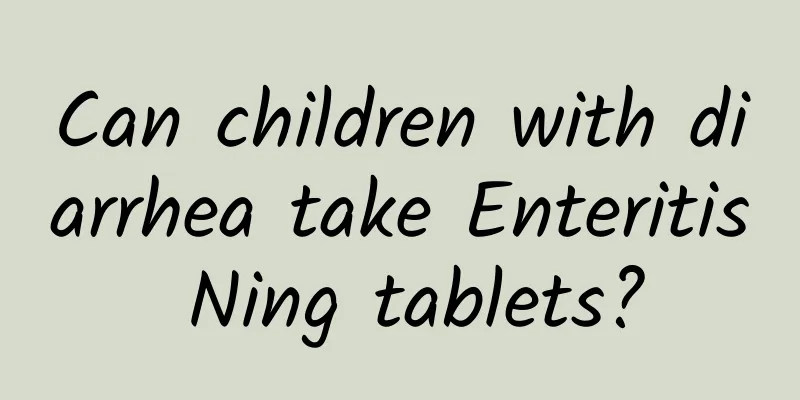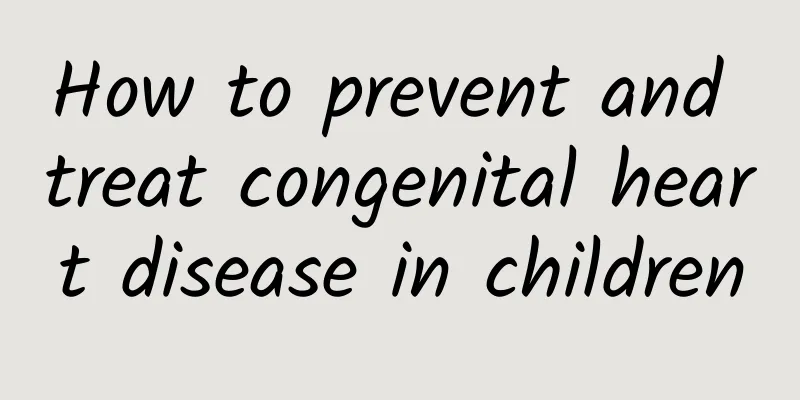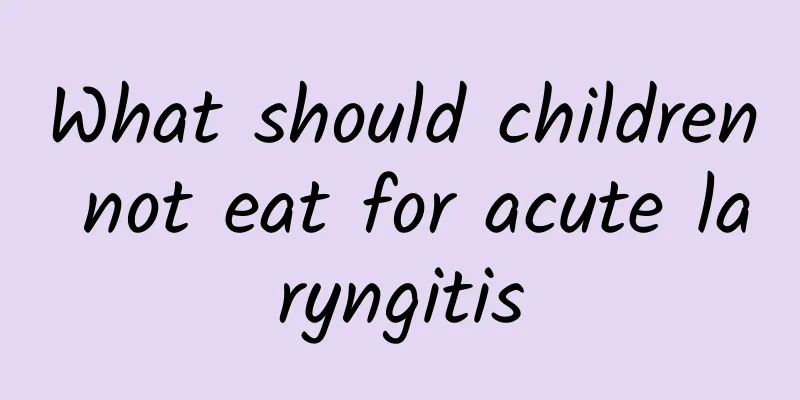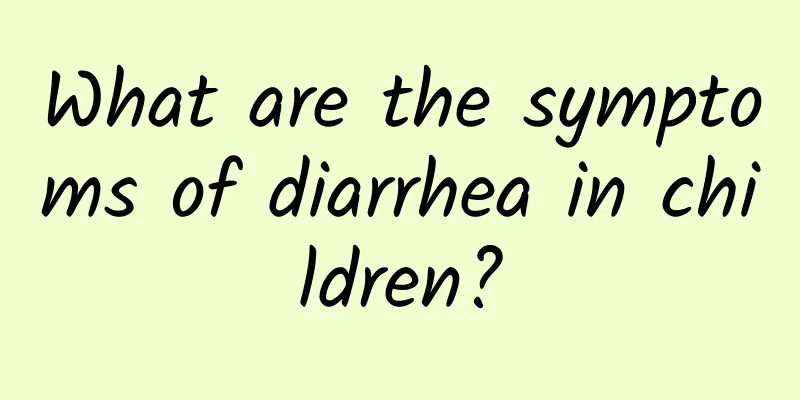What are the symptoms of hand, foot and mouth disease?
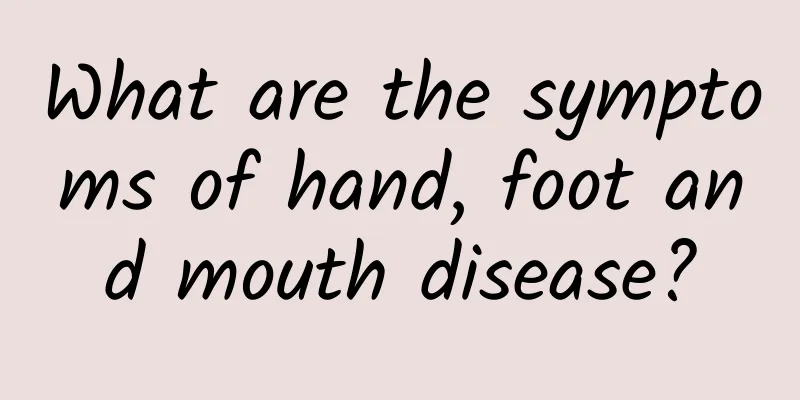
|
Hand, foot and mouth disease is a mild, contagious viral infection that is common in young children and is characterized by mouth sores and rashes on the hands and feet. So, what are the dangers of hand, foot and mouth disease? What foods are good for the body when you have hand, foot and mouth disease? Now, let's learn about hand, foot and mouth disease with the editor! 1. What are the symptoms of hand, foot and mouth disease? 2. The harm of hand, foot and mouth disease 3. What foods are good for the body when suffering from hand, foot and mouth disease? What are the symptoms of hand, foot and mouth disease? 1. General symptoms (1) Acute onset, incubation period of 3-5 days, with prodromal symptoms such as low fever, general discomfort, abdominal pain, etc. Scattered painful millet-sized to mung bean-sized blisters appear on the oral mucosa, and maculopapular rashes and herpes appear on the hands and feet. The initial onset is maculopapular rashes, which later turn into herpes, which are round or oval, about 3-7mm, like the size of rice grains, smaller than the chickenpox rash, harder in texture, with a red halo around it, less fluid in the blisters, and dot-like or flaky erosions can be seen under the gray-white membrane. After the rash subsides, no scars or pigmentation are left. If there is a secondary infection, the skin damage will often be aggravated. (2) In addition to the hands, feet and mouth, herpes can also appear on the buttocks and near the anus, and occasionally on the trunk and limbs. The rash dries up and disappears after a few days. The rash does not itch or cause pain. (3) Some children may develop generalized papules and blisters, accompanied by aseptic meningitis, encephalitis, myocarditis, etc. They may also be accompanied by symptoms such as cough, runny nose, loss of appetite, nausea, vomiting, and headache. (4) Some cases only present with rash or herpetic pharyngitis. The entire course of the disease is about 5-10 days, and most cases can heal on their own, with a good prognosis and no sequelae. 2. Symptoms of severe cases In a few cases (especially those under 3 years old), encephalitis, encephalomyelitis, meningitis, pulmonary edema, circulatory failure, etc. may occur. (1) Respiratory system manifestations include: shallow and difficult breathing, changes in respiratory rhythm, cyanosis of the lips, white, pink or bloody foamy fluid (sputum) in the mouth, and sputum sounds or moist rales in the lungs. (2) Neurological manifestations include poor spirits, drowsiness, headache, vomiting, easy fright, limb tremors, weakness or paralysis; physical examination may reveal meningeal irritation and weakened or absent tendon reflexes; critical cases may present with frequent convulsions, coma, cerebral edema, and brain herniation. (3) Circulatory system symptoms include: pale complexion, increased or decreased heart rate, shallow, rapid, weakened or even absent pulse, cold limbs, cyanosis of fingers and toes, and increased or decreased blood pressure. The dangers of hand, foot and mouth disease Although hand, foot and mouth disease is not a serious disease, in recent years, many children have developed serious complications from it. If hand, foot and mouth disease is not treated in time, it can cause encephalitis, pneumonia, myocarditis, and damage to important organs. Hand, foot and mouth disease is a common disease. Common cases are the same as general respiratory infections, and the damage and harm are not too serious. But for severe cases, it is more serious because it can damage the nerves, respiratory and circulatory systems. Moreover, hand, foot and mouth disease is more dangerous and more harmful to children. Generally, if you encounter hand, foot and mouth disease, it is best to seek medical attention in time. The incubation period of hand, foot and mouth disease is generally 3-6 days. In the early stage of the disease, there are symptoms similar to colds, such as fever, cough, runny nose, nausea, vomiting, etc. The fever can last for 4-5 days. Among the other symptoms of hand, foot and mouth disease, oral mucosal rash appears relatively early. At first, it is a corn-like maculopapular rash or blisters with a red halo around it. Generally, there is no pain or itching, and no trace is left after recovery. There will be painful ulcers in the mouth, which will cause difficulty in swallowing and loss of appetite; flat or convex maculopapular rashes or herpes will appear on the hands and feet and other distal parts. The rash is not itchy. The maculopapular rashes turn from red to dark in about 5 days and then disappear. Complications of hand, foot and mouth disease are not common. In rare cases, viral meningitis will occur. What to eat for hand, foot and mouth disease is good for the body Stage 1: Initial stage of the disease. Mouthache and fear of eating. Dietary tips: Mainly liquid foods such as milk, soy milk, rice soup, egg drop soup, etc. Eat small and frequent meals to maintain basic nutritional needs. In order to reduce mouthache when eating, the food should not be too hot or too cold, and the taste should not be too salty or sour. Here is a little trick - use a straw to suck to reduce the contact between food and oral mucosa. Stage 2: Fever subsides. Mouth pain is relieved. Diet is mainly pureed food. For example: milk banana puree. Milk provides high-quality protein; bananas are easy to make into puree, rich in carbohydrates, carotene and pectin, which can provide heat energy and vitamins, and moisturize the intestines and promote bowel movements. The third stage: recovery period. Eat more often. The amount does not need to be too much, but the nutrition should be high. For example, add a small amount of chopped vegetables, minced tofu, minced mushrooms, etc. to the egg custard. Resume normal diet in about ten days. There is also a saying "vegetarian, no meat". If you eat vegetarian food completely, excluding milk, eggs and other nutritional supplements, the nutritional quality is not enough, lacking high-quality protein, and antibodies are a kind of protein, so vegetarianism is not appropriate. |
<<: Children's allergic rhinitis allergic cough always recurs
>>: How to prevent hand, foot and mouth disease? How is hand, foot and mouth disease transmitted?
Recommend
How to reduce high jaundice in newborns
Neonatal jaundice can be reduced through general ...
What to do if children have urticaria due to cold
When children have a cold, urticaria is often rel...
What to eat to increase breast milk? What are the ways to increase breast milk?
Most women will selflessly choose breastfeeding t...
Is jaundice 310 serious?
Is jaundice 310 serious? 1. Jaundice 310 usually ...
Necessity of pneumonia examination in children
Many parents may not know about pediatric pneumon...
How to treat lung heat cough and asthma in children How to regulate diet for lung heat cough and asthma in children
Children with lung heat, cough and asthma can be ...
The hazards of pathological neonatal jaundice
Pathological neonatal jaundice is a condition tha...
Normal value of neonatal jaundice in 24 hours
Normal value of neonatal jaundice in 24 hours 1. ...
Does a newborn with patent ductus arteriosus need to take medicine?
Whether a newborn with patent ductus arteriosus n...
Three major characteristics of breast milk jaundice
Breast milk jaundice refers to jaundice symptoms ...
How long does it take for breast milk jaundice to subside on its own?
Breast milk jaundice is a common type of jaundice...
What are the causes of infant eczema? There are 7 common factors that cause infant eczema.
Eczema is one of the diseases that bothers many b...
Can pneumonia in children be cured?
Whether pneumonia in children can be cured can be...
What are the symptoms of influenza in children? 2 symptoms of influenza in children
Colds and flu are both caused by viral infections...
Causes of acute laryngitis in children
The weather is turning cold, and it is the peak s...


